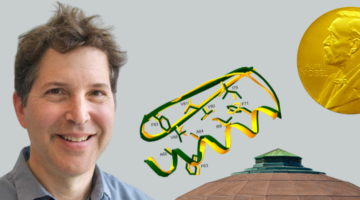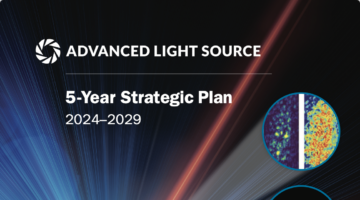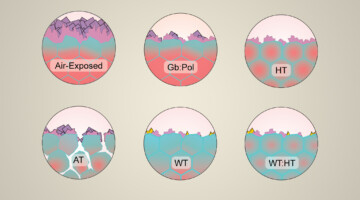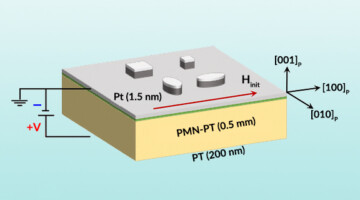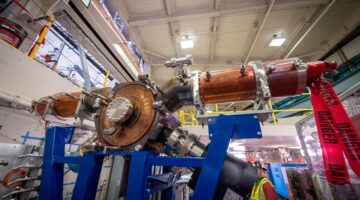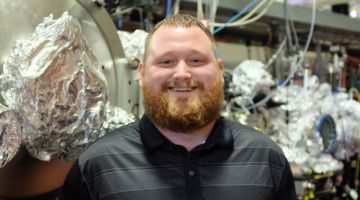The 2024 Nobel Prize in Chemistry was awarded to David Baker, Demis Hassabis, and John M. Jumper for the development of protein structure prediction and design. At the ALS, Baker leveraged high-throughput small-angle x-ray scattering (SAXS) and protein crystallography capabilities to design novel proteins and pave a new pathway for science, technology, and the environment. Read more »
ALSNews Vol. 463
October 23, 2024
The ALS Releases New Version of Strategic Plan
The Advanced Light Source’s five-year strategic plan is now available, presenting our vision to be a premier synchrotron facility through team innovation and advanced technologies. Developed collaboratively with staff, partners, and users, the plan charts our course to deliver world-class capabilities with ALS-U and beyond, building on 2023 User Meeting science visioning workshops. Read more »
Studying Interfacial Effects in Solid-Electrolyte Batteries
An ambient-pressure probe of a solid electrolyte revealed how surface electrochemical mechanisms lead to poor electrolyte performance and battery failure. The results can help scientists engineer better coatings and interfaces, which are essential for building safer and better-performing batteries, particularly for use in vehicles. Read more »![]()
![]()
Magnetization Switching in Highly Magnetostrictive Microstructures
Researchers learned how the size, shape, and orientation of microstructures affect how they switch magnetization directions in response to an applied voltage. The work advances our understanding of strain-responsive composite materials for use in energy-efficient electronic applications such as memory devices, sensors, and actuators. Read more »![]()
![]()
Tracking Oxidation in “High-Entropy” Alloys with Multiple Principal Elements
For extreme applications such as nuclear fusion reactors and high-temperature jet engines, scientists are experimenting with “high-entropy” alloys that consist of many metals mixed together in equal proportions. In this work, researchers begin to unravel how these materials degrade under high-temperature oxidative environments. Read more »![]()
The Spatial Dynamics of Bone Remodeling During Lactation
To mobilize the minerals needed for milk production, osteocytes—the cells responsible for maintaining bone quality—facilitate the release of calcium and other minerals from the bone matrix surrounding them. In this study, researchers investigated how osteocytes balance the rapid release of calcium with maintaining bone integrity. Read more »![]()
Summer 2024 Shutdown Recap
The ALS is back in user operation after more than two months of shutdown. By now, more than 80% of the Accumulator Ring (AR) has been installed, as well as both of its radio frequency (RF) cavities. A number of other tasks were also completed. Read more »
In Memoriam: Terry McAfee, Senior Scientific Engineering Associate
The ALS community is saddened to lose Terry McAfee, who was a caring and hardworking presence since he started coming to the facility as a graduate student. From ALS user to full-time staff, he always strove to create a welcoming environment. We will remember his passion for STEM and his love for his family. Read more »
Berkeley Lab User Facilities and University of Oklahoma Collaboration Awarded EPSCoR Grant
The ALS, Molecular Foundry, and a partner at the University of Oklahoma were recently awarded a four-year DOE EPSCoR grant to study bio-inspired membranes for recovering rare earth elements from waste streams. This project aims to develop a model for resource recovery applicable across industries. Read more »
David Shapiro Elected Fellow of the American Physical Society
David Shapiro has been elected as a 2024 Fellow of the American Physical Society. The Council of Representatives recognizes him “for pioneering work in the development of the lensless diffractive imaging method, x-ray ptychography, and the scientific use of this imaging technique for important energy, chemical, materials, magnetic, physics, and biological uses.”
